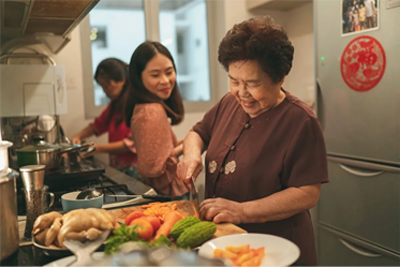In our twilight years, the home becomes more than just a place of comfort—it transforms into a sanctuary of safety, independence, and quality of life. For senior citizens, creating an accessible environment is crucial in supporting their aging-in-place journey. Home modifications for seniors, whether they are simple fixtures like grab bars or substantial renovations like wheelchair ramps, are investments in maintaining independence and enhancing the overall well-being. Today, let’s dive into the manifold benefits of accessible homes and why ‘Thrive for Life Accessibility Specialists’ should be your trusted partner in this mission.
The Imperative for Accessibility: Safety, Comfort, and Independence
The need for accessibility in homes for seniors cannot be overstated. According to the Centers for Disease Control and Prevention, one out of four seniors experiences a fall each year. Such incidents can be significantly reduced or even prevented by modifying homes to suit their needs.
From widening doorways for easy wheelchair access to installing non-slip rugs to prevent falls, accessible home modifications for seniors not only enhance safety but also reinforce their independence. By creating an environment that mitigates the risk of accidents, seniors can confidently navigate their homes, enjoy their daily routines, and maintain their quality of life.
Examples of Accessible Home Modifications
The term “home modifications” is all-encompassing. They range from simple, cost-effective changes to more elaborate renovations that require a substantial budget.
Here are some examples:
- Grab Bars: These assistive devices offer support and balance in crucial areas like the bathroom, reducing the risk of falls.
- Non-Slip Rugs: They provide additional traction on slippery floors, significantly reducing fall hazards.
- Wheelchair Ramps and Stairlifts: These additions enhance mobility for seniors with physical limitations, enabling them to navigate their homes more easily.
- Walk-In Showers: A safer alternative to traditional bathtubs, walk-in showers decrease the risk of falls during bathing.
All these modifications, regardless of their complexity, contribute to the seniors’ safety, comfort, and independence.
The Data Behind the Benefits
Accessible home modifications are not mere conveniences—they are essential for senior safety at home. According to the National Council on Aging, accessible home improvements reduce fall risk by 50%. Additionally, the National Institute on Aging cites that seniors living in appropriately modified homes experience higher levels of independence and lower levels of caregiver stress.
These statistics underscore the benefits of accessible homes, making the case for the necessity of such modifications.
Thrive For Life Accessibility Specialists: Your Partner in Senior Home Modifications
With a plethora of options available, making the right choice can be overwhelming. At Thrive for Life, we’re committed to making your aging-in-place journey as seamless as possible. Our team of experts offers personalized consultations to assess your needs and design modifications that optimize your home’s accessibility.
Conclusion: Making the Right Choice for Independence
Investing in accessible home modifications for seniors is a proactive step toward preserving their independence, safety, and comfort. Remember, the goal isn’t just to age, but to thrive for life.
Take the first step in this journey by contacting us at www.ThriveForLife.com. Let’s work together to create a home that supports your independence, enhances your safety, and improves your quality of life.
